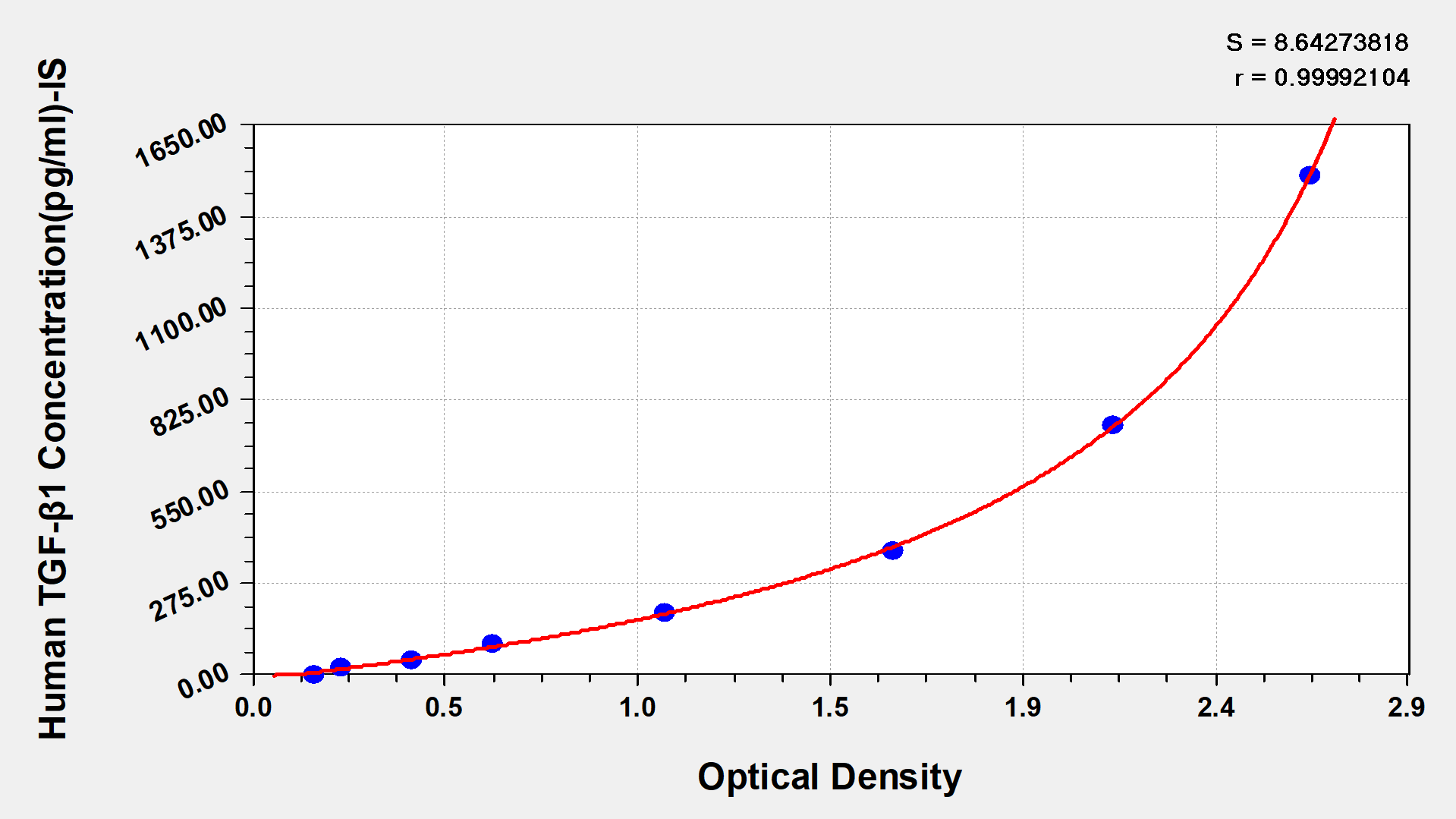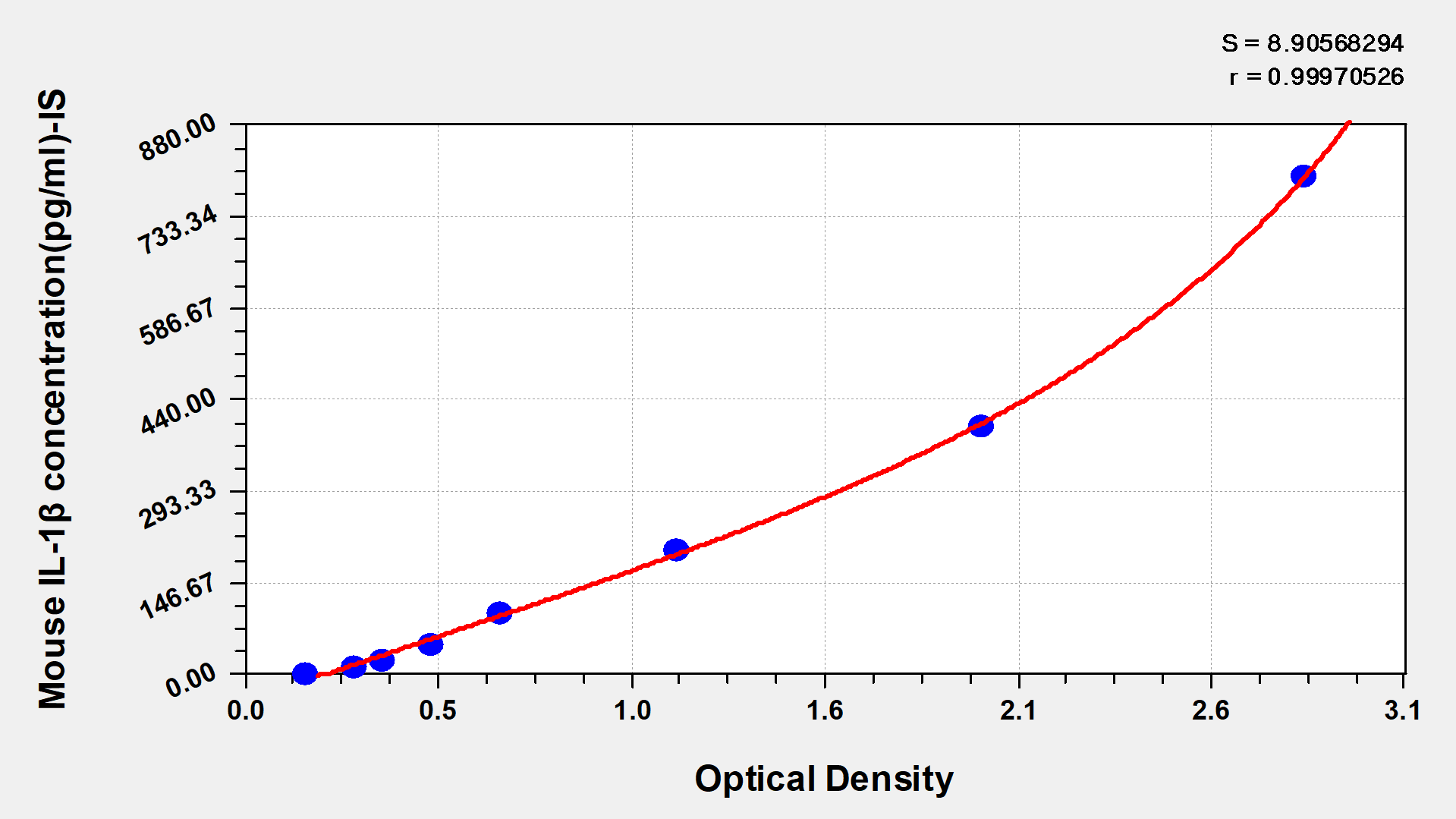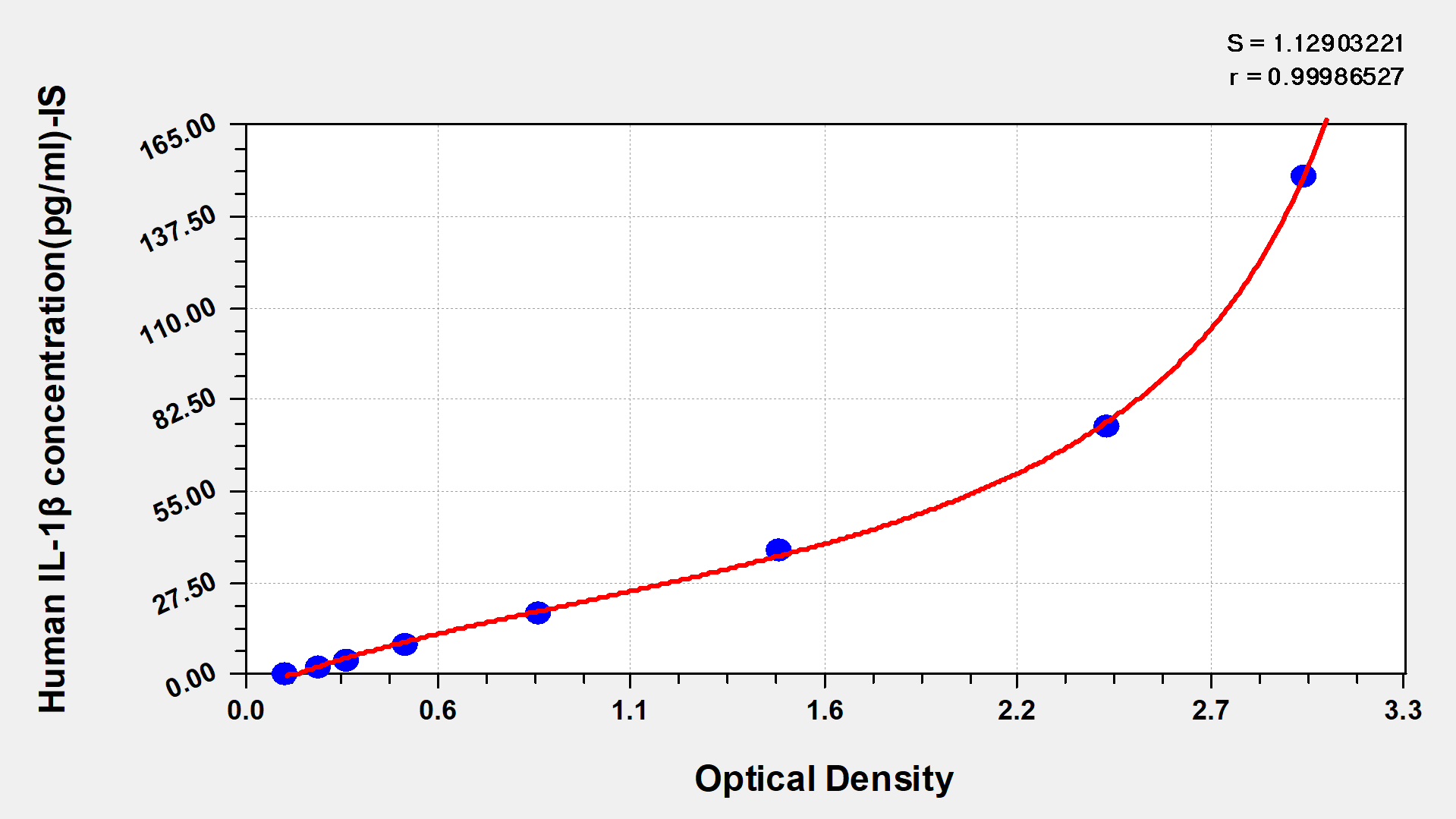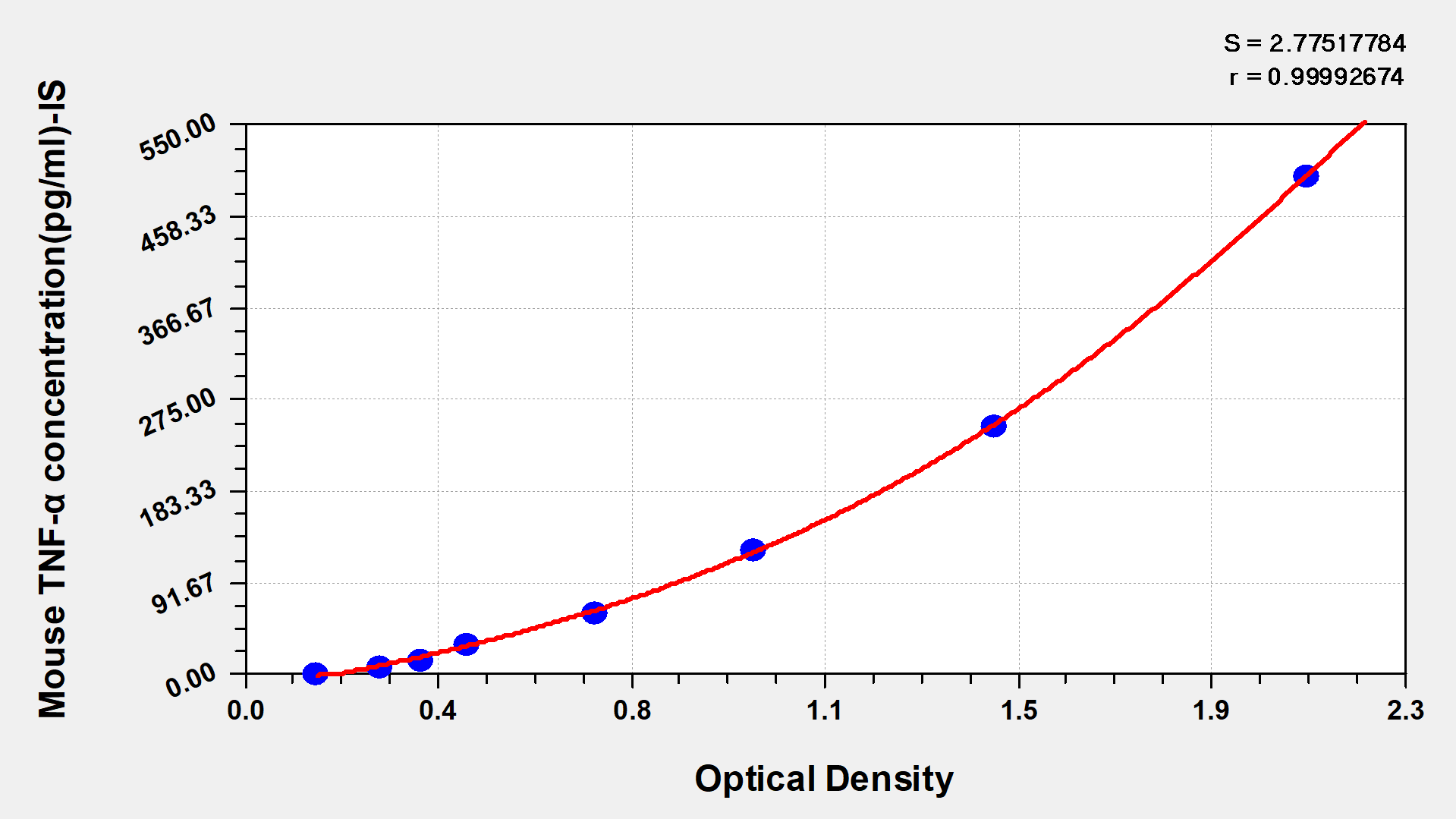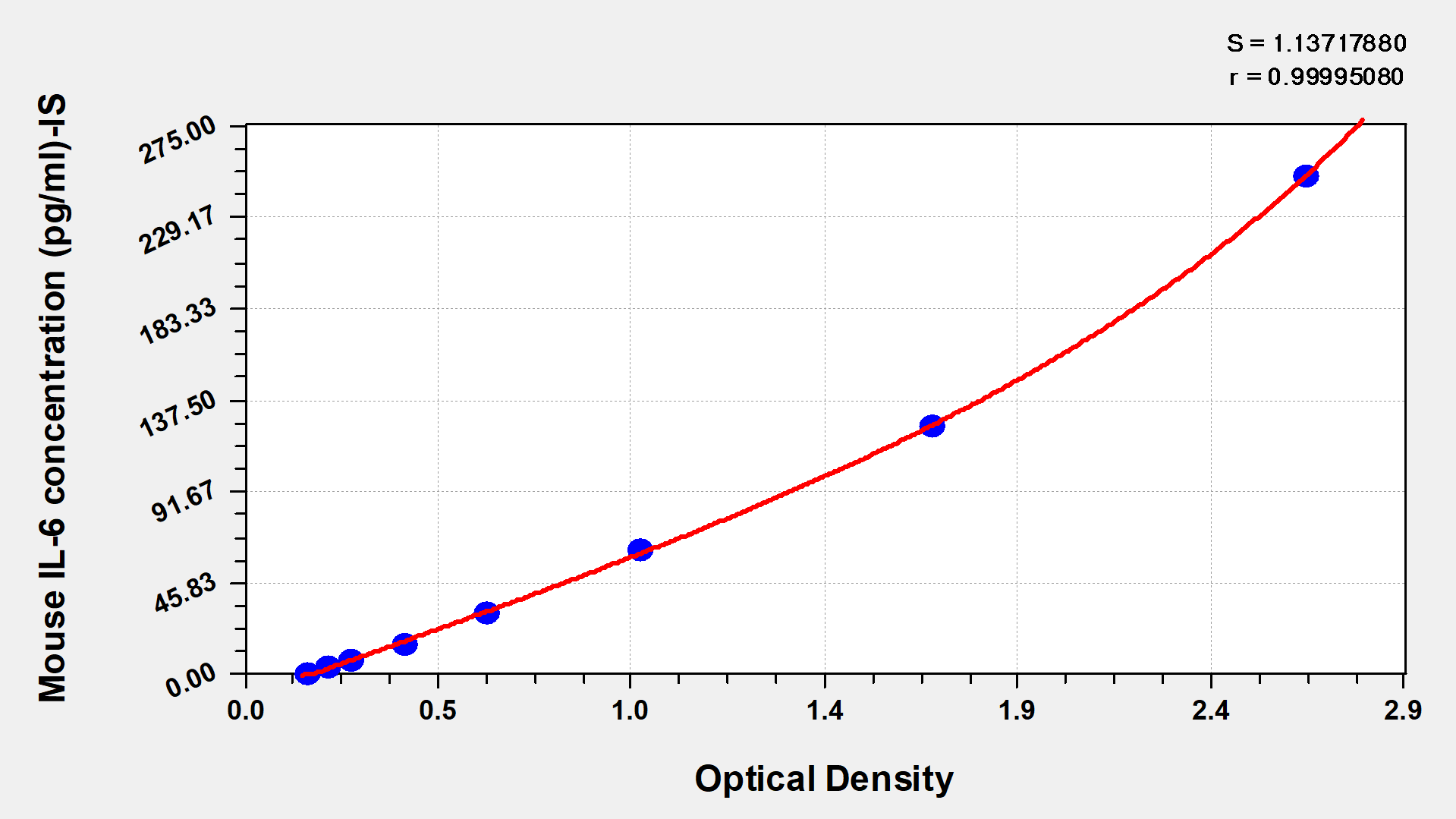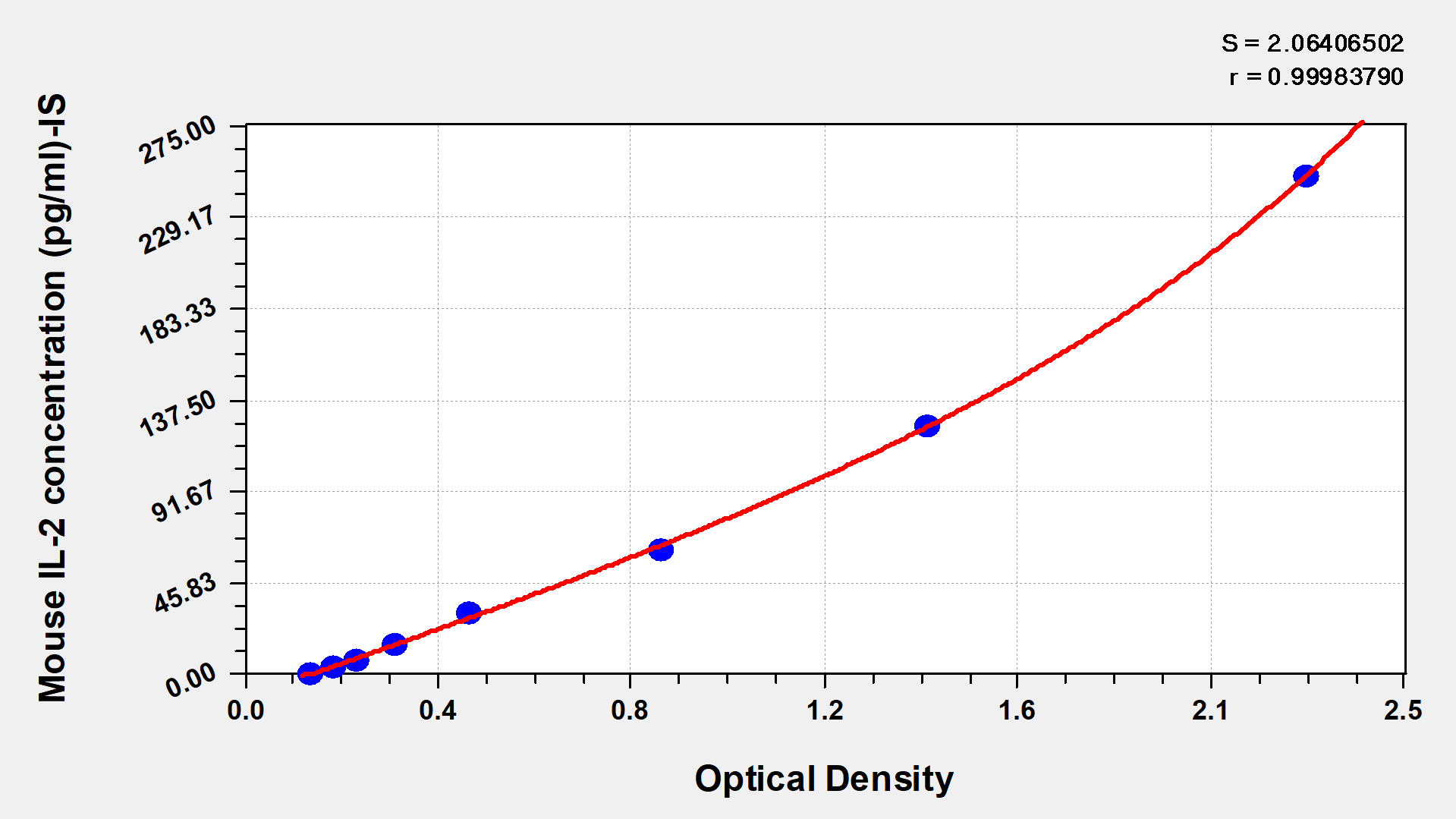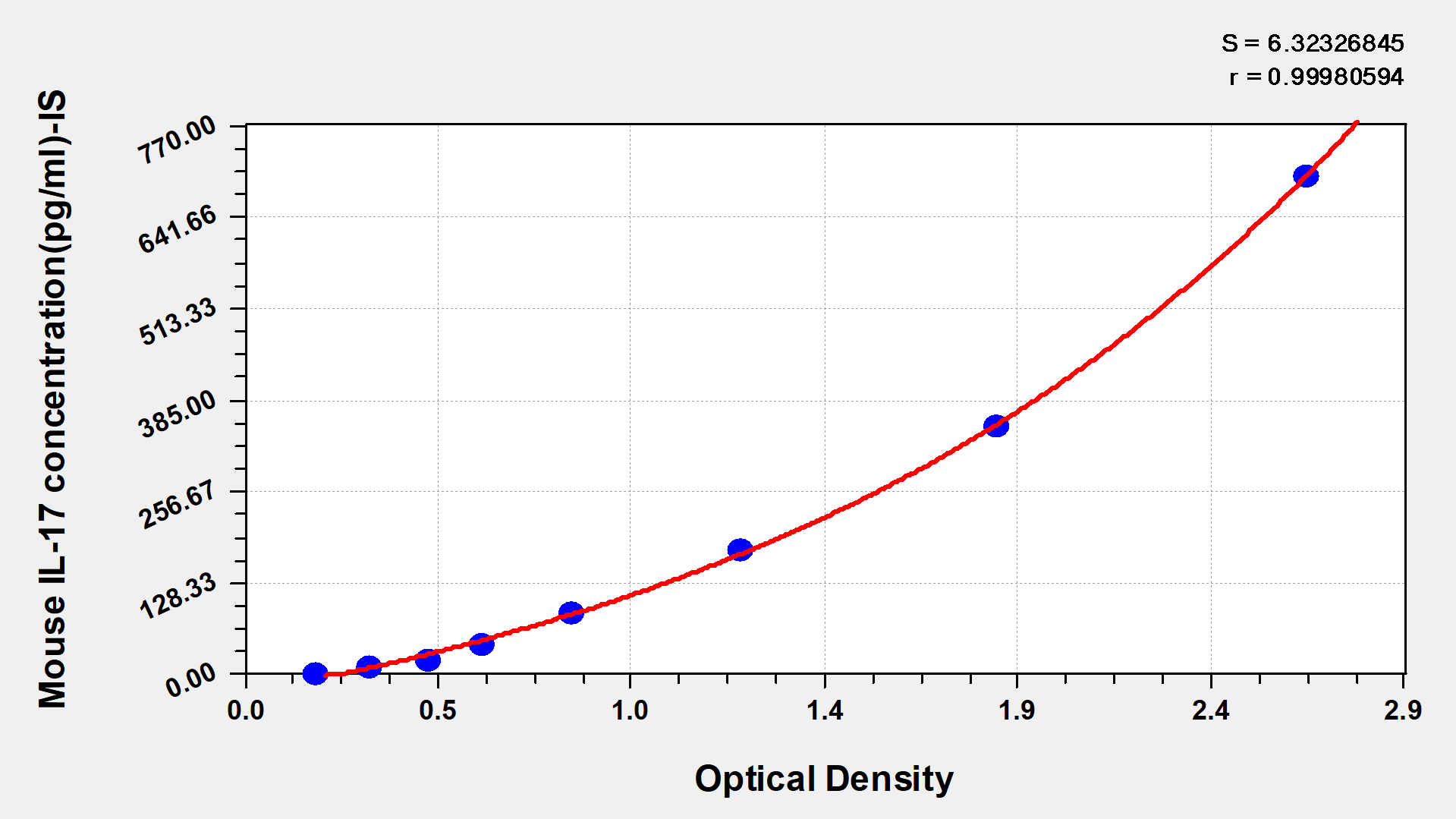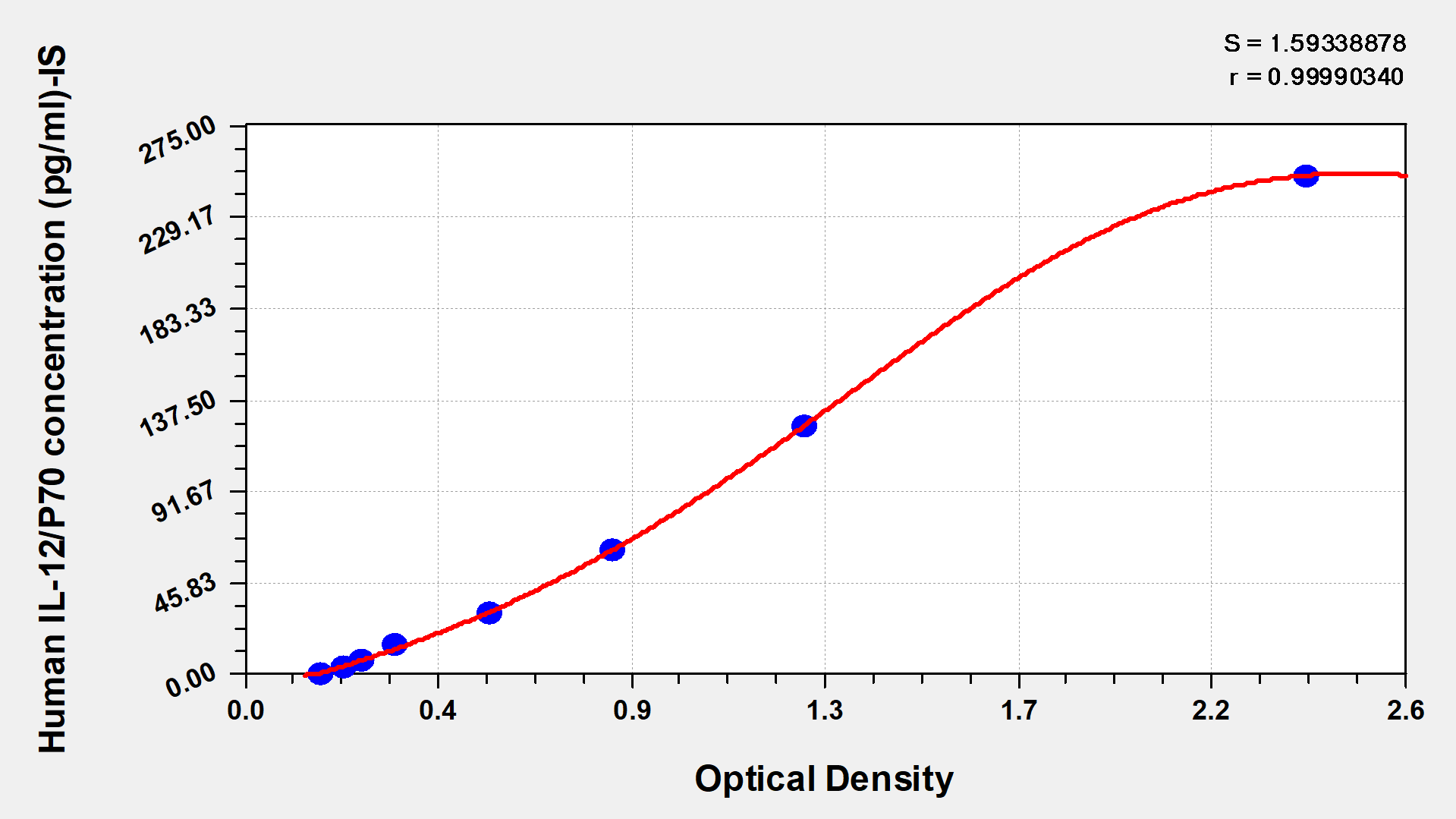Human angiopoietin-like protein 3,ANGPTL3 ELISA Kit
-
中文名称:人血管生成素样蛋白3(ANGPTL3)酶联免疫试剂盒
-
货号:CSB-E11724h
-
规格:96T/48T
-
价格:¥3200/¥2500
-
其他:
产品详情
-
产品描述:人血管生成素样蛋白3(ANGPTL3)是一种由肝脏分泌的糖蛋白,通过抑制脂蛋白脂肪酶活性参与脂质代谢调控,其表达水平与心血管疾病、代谢综合征等病理过程密切相关。本试剂盒(货号CSB-E11724h)采用双抗体夹心ELISA原理,可定量检测血清、血浆及组织匀浆样本中ANGPTL3蛋白含量,检测灵敏度为78 pg/mL,线性范围为78-5000 pg/mL,能够精准覆盖生理及病理状态下的浓度变化。实验采用预包被特异性捕获抗体的96孔板,通过生物素标记检测抗体与链霉亲和素-HRP系统实现信号放大,配合TMB显色完成定量分析。该试剂盒适用于基础研究领域,例如探究ANGPTL3在脂代谢异常、动脉粥样硬化等疾病中的分子机制,评估动物模型或细胞实验中的蛋白表达水平变化,以及筛选调控ANGPTL3的潜在药物靶点。针对不同样本类型,建议通过预实验优化组织匀浆制备条件,并遵循标准操作流程以确保数据可靠性。本产品仅供科学研究使用,需在专业实验室条件下操作。
-
别名:ANG 5 ELISA Kit; ANG-5 ELISA Kit; ANG5 ELISA Kit; Angiopoietin 5 ELISA Kit; Angiopoietin like 3 ELISA Kit; Angiopoietin related protein 3 ELISA Kit; Angiopoietin-5 ELISA Kit; Angiopoietin-like protein 3 ELISA Kit; Angiopoietin-related protein 3 ELISA Kit; ANGL3_HUMAN ELISA Kit; ANGPT5 ELISA Kit; ANGPTL3 ELISA Kit; ANL3 ELISA Kit; FHBL2 ELISA Kit; OTTHUMP00000010719 ELISA Kit; UNQ153/PRO179 ELISA Kit
-
缩写:
-
Uniprot No.:
-
种属:Homo sapiens (Human)
-
样本类型:serum, plasma, tissue homogenates
-
检测范围:78 pg/mL-5000 pg/mL
-
灵敏度:19.5 pg/mL
-
反应时间:1-5h
-
样本体积:50-100ul
-
检测波长:450 nm
-
研究领域:Cardiovascular
-
测定原理:quantitative
-
测定方法:Sandwich
-
精密度:
Intra-assay Precision (Precision within an assay): CV%<8%
Three samples of known concentration were tested twenty times on one plate to assess.
Inter-assay Precision (Precision between assays): CV%<10%
Three samples of known concentration were tested in twenty assays to assess.
Intra-Assay Precision
Inter-Assay Precision
Sample
1
2
3
1
2
3
n
20
20
20
20
20
20
Mean(pg/ml)
639.119
656.229
645.069
632.426
624.245
636.144
SD
0.037
0.040
0.033
0.045
0.052
0.046
CV(%)
4.774
5.013
4.215
5.875
6.887
5.966
-
线性度:
To assess the linearity of the assay, samples were spiked with high concentrations of human ANGPTL3 in various matrices and diluted with the Sample Diluent to produce samples with values within the dynamic range of the assay.
Sample
Serum(n=4)
1:10
Average %
90
Range %
80-110
1:20
Average %
97
Range %
91-105
1:40
Average %
95
Range %
90-105
1:80
Average %
93
Range %
86-98
-
回收率:
The recovery of human ANGPTL3 spiked to levels throughout the range of the assay in various matrices was evaluated. Samples were diluted prior to assay as directed in the Sample Preparation section.
Sample Type
Average % Recovery
Range
Serum (n=5)
93
85-98
EDTA plasma (n=4)
95
90-100
-
标准曲线:
These standard curves are provided for demonstration only. A standard curve should be generated for each set of samples assayed.
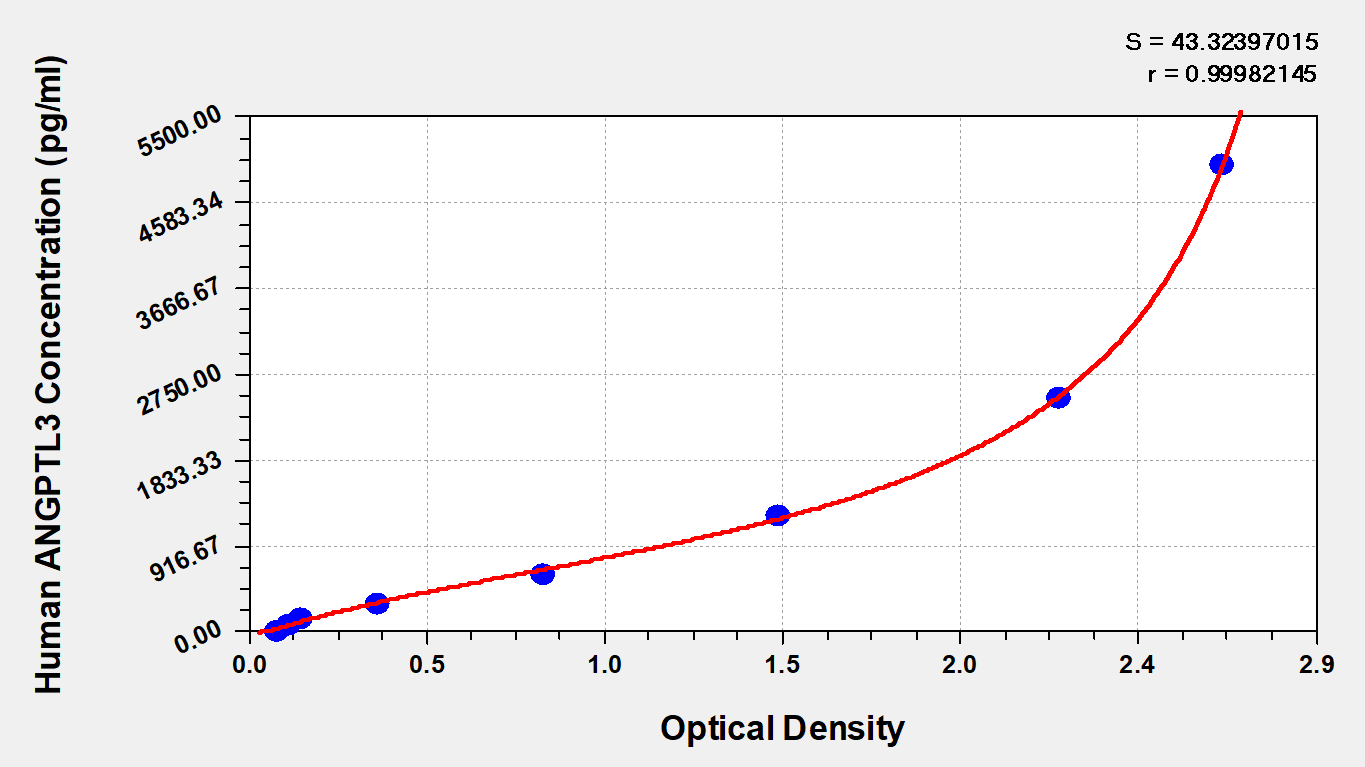
pg/ml
OD1
OD2
Average
Corrected
5000
2.648
2.689
2.669
2.583
2500
2.235
2.206
2.221
2.135
1250
1.442
1.468
1.455
1.369
625
0.806
0.817
0.812
0.726
312.5
0.346
0.369
0.358
0.272
156
0.143
0.151
0.147
0.061
78
0.112
0.116
0.114
0.028
0
0.082
0.089
0.086
-
数据处理:
-
货期:3-5 working days
相关产品
靶点详情
-
最新研究进展:ANGPTL3是一种新发现的蛋白质,主要与脂质代谢和心血管疾病有关。最近的研究发现,ANGPTL3的缺失可以导致高密度脂蛋白胆固醇(HDL-C)升高和低密度脂蛋白胆固醇(LDL-C)降低,从而降低心血管疾病风险。因此,ANGPTL3可能成为治疗高胆固醇血症和心血管疾病的新靶点。
-
功能:Acts in part as a hepatokine that is involved in regulation of lipid and glucose metabolism. Proposed to play a role in the trafficking of energy substrates to either storage or oxidative tissues in response to food intake. Has a stimulatory effect on plasma triglycerides (TG), which is achieved by suppressing plasma TG clearance via inhibition of LPL activity. The inhibition of LPL activity appears to be an indirect mechanism involving recruitment of proprotein convertases PCSK6 and FURIN to LPL leading to cleavage and dissociation of LPL from the cell surface; the function does not require ANGPTL3 proteolytic cleavage but seems to be mediated by the N-terminal domain, and is not inhibited by GPIHBP1. Can inhibit endothelial lipase, causing increased plasma levels of high density lipoprotein (HDL) cholesterol and phospholipids. Can bind to adipocytes to activate lipolysis, releasing free fatty acids and glycerol. Suppresses LPL specifically in oxidative tissues which is required to route very low density lipoprotein (VLDL)-TG to white adipose tissue (WAT) for storage in response to food; the function may involve cooperation with circulating, liver-derived ANGPTL8 and ANGPTL4 expression in WAT. Contributes to lower plasma levels of low density lipoprotein (LDL)-cholesterol by a mechanism that is independent of the canonical pathway implicating APOE and LDLR. May stimulate hypothalamic LPL activity.; In vitro inhibits LPL activity; not effective on GPIHBP1-stabilized LPL.; Involved in angiogenesis. Binds to endothelial cells via integrin alpha-V/beta-3 (ITGAV:ITGB3), activates FAK, MAPK and Akt signaling pathways and induces cell adhesion and cell migration. Secreted from podocytes, may modulate properties of glomerular endothelial cells involving integrin alpha-V/beta-3 and Akt signaling. May increase the motility of podocytes. May induce actin filament rearrangements in podocytes implicating integrin alpha-V/beta-3 and Rac1 activation. Binds to hematopoietic stem cells (HSC) and is involved in the regulation of HSC activity probably implicating down-regulation of IKZF1/IKAROS.
-
基因功能参考文献:
- Association of low-density lipoprotein receptor-related protein 1 rs11613352 and angiopoietin-like 3 rs2131925 with hypertension might imply a direct effect at the artery wall. PMID: 29989339
- The present data leads to new insights into the role of ANGPTL3 in glioblastomas and provides an independent predictive factor PMID: 26639238
- The role of ANGPLT3 in controlling lipoprotein metabolism and risk of cardiovascular diseases is reviewed here. PMID: 29334984
- these results suggest that the DOCK-ANGPTL3 SNPs and their haplotypes were associated with the angiographic severity to coronary artery atherosclerosis and the risk of coronary artery disease (CAD) and ischemic stroke in the Southern Chinese Han population. PMID: 29454388
- Subjects who carried ANGPTL3 sequence variants rs12563308 and rs199772471 had abnormally high total cholesterol and LDL-cholesterol concentrations. PMID: 28972399
- circulating ANGPTL3 and ANGPTL 4 expression was significantly elevated in hepatocellular carcinoma cases compared to chronic hepatitis patients and controls PMID: 28371666
- ANGPTL8 has a functional LPL inhibitory motif, but only inhibits LPL and increases plasma TG levels in mice in the presence of ANGPTL3 PMID: 28413163
- Our findings demonstrate that complete ANGPTL3 deficiency associates with highly reduced postprandial lipemia probably due to faster catabolism of intestinally derived lipoproteins, larger expansion of the postprandial FFA pool, and decreased influx of dietary-derived fatty acids into the liver. These results add information on mechanisms underlying hypolipidemia in familial combined hypolipidemia (FHBL2). PMID: 27040449
- participants with heterozygous loss-of-function variants in ANGPTL3 had significantly lower serum levels of triglycerides, HDL cholesterol, and LDL cholesterol than participants without these variants. PMID: 28538136
- ANGPTL3 deficiency is associated with protection from coronary artery disease. PMID: 28385496
- our data shows that ANGPTL3, 4 and 8 are increased in obesity and type 2 diabetes (T2D). ANGPTL8 associates with ANGPTL3 in the non-diabetic subjects while it associated more with ANGPTL4 in the obese and T2D subjects. PMID: 27733177
- ANGPTL3 is specifically correlated with HDL-c, apoA-I, SAA and HDL function in female non-diabetic participants. The decrease of ANGPTL3 level in female T2DM patients might contribute to its weak association to HDL components and function. PMID: 27620179
- The ANGPTL3 gene lies within DOCK7, although the variant is within non-coding regions outside of ANGPTL3, within DOCK7, suggesting complex long-range regulatory effects on gene expression in coronary artery disease. PMID: 26800306
- ANGPTL3 levels were associated with fasting insulin and the homeostasis model assessment of insulin resistance in Korean children. PMID: 26739706
- An ANGPTL3-4-8 model was proposed to explain the variations of lipoprotein lipase (LPL) activity during the fed-fast cycle. Feeding induces ANGPTL8, activating the ANGPTL8-ANGPTL3 pathway, which inhibits LPL in cardiac and skeletal muscles to direct circulating triglycerides (TG) to white adipose tissue; the reverse is true during fasting, which suppresses ANGPTL8 but induces ANGPTL4, thereby directing TG to muscles. PMID: 27053679
- Inactivation of ANGPTL3 reduces hepatic VLDL-triglyceride secretion PMID: 25954050
- Novel mutation Y344S found in ANGPTL3 gene in two diabetic patients with familial hypobetalipoproteinemia. PMID: 25733326
- Data suggest that silencing of ANGPTL 3 (angiopoietin-like protein 3) improves insulin sensitivity. PMID: 25495645
- HCV core represses ANGPTL-3 expression through loss of HNF-1alpha binding activity and blockage of LXR/RXR transactivation PMID: 23978712
- Data suggest that genetic polymorphisms in ANGPTL3 (angiopoietin-like 3 protein), TIMD4 (T cell immunoglobulin mucin-4), and apolipoproteins A5 and B are among the genetic determinants of hypertriglyceridemia in Amerindian populations. [REVIEW] PMID: 24768220
- ANGPTL3 is positively associated with low-density lipoprotein cholesterol and high-density lipoprotein cholesterol and not with metabolic syndrome traits including triglycerides. PMID: 24626437
- Identification of loss-of-function ANGPTL3 mutation is shedding light on a possible role of ANGPTL3 at the crossroads of lipoproteins, fatty acids, and glucose metabolism. [Review] PMID: 23839332
- Although partial Angptl3 deficiency did not affect the activities of lipolytic enzymes, the complete absence of Angptl3 results in an increased lipoprotein lipase activity and mass and low circulating free fatty acid levels. PMID: 23661675
- No gene-gene interaction was identified other than an interaction between SNPs in the ANGPTL3 and RXRA regions, which results in the inhibition of ApoB reduction in response to statin-FNA therapy. PMID: 22896670
- ANGPTL3 activation is modulated by O-glycosylation and the proprotein undergoes convertase processing for activation. PMID: 20837471
- Familial combined hypolipidemia segregates as a recessive trait so that apolipoprotein B- and apolipoprotein A-I-containing lipoproteins are comprehensively affected only by the total deficiency of Angptl3. PMID: 22659251
- the homozygous or compound heterozygous for ANGPTL3 loss-of-function mutations (p.G400VfsX5, p.I19LfsX22/p.N147X) had low plasma ANGPTL3 and moderately reduced low-density lipoprotein cholesterol but normal plasma high-density lipoprotein cholesterol. PMID: 22062970
- It denominated familial combined hypolipidemia, which consist of a biochemical phenotype of low LDLc, low apoB, low TG and, unlike APOB mutations, low HDL cholesterol, due to a loss-of-function mutation in ANGPTL3. PMID: 22155345
- The prevalence and effect of mutations in ANGPTL3, in carriers of pathogenic autosomal dominant hypercholesterolemia mutations with unexpected low LDL-C levels. PMID: 22095935
- In a cohort of subjects with severe primary hypobetalipoproteinemia the prevalence of ANGPTL3 gene mutations responsible for a combined hypolipidemia phenotype is about 10%. PMID: 22247256
- Serum Angptl3 was positively correlated with adiponectin in metabolic syndrome patients. PMID: 20360639
- Dysmorphic findings in two cases involving FBHL2 are reported. PMID: 19282754
- relationship between plasma angiopoietin-like protein 3 (ANGPTL3), and lipoprotein lipase (LPL) activity and hepatic triglyceride lipase PMID: 20595410
- Found two distinct nonsense mutations in ANGPTL3 in 2 family members out of 38 with combined hypolipidemia. PMID: 20942659
- Data suggest roles for ANGPTL3 and ANGPTL4 in modulation of serum TG and HDL levels in obesity in a Finnish population sample. PMID: 19826106
- Like ANGPTL4, ANGPTL3 inhibited nonstabilized LPL but not GPIHBP1-stabilized LPL PMID: 19542565
- ANGPTL3 may be a novel factor contributing to uremic dyslipidemia. PMID: 19540497
- ANGPTL3 stimulates endothelial cell adhesion and migration via integrin alpha vbeta 3 and induces blood vessel formation in vivo PMID: 11877390
- Angptl3 gene is a direct target of the liver X receptor (LXR). PMID: 12518032
- Data show that angiopoietin-like protein 3 (ANGPTL3) targets adipose cells and induces lipolysis. PMID: 12565906
- the cleavage of ANGPTL3 at two sites is important for the activation of ANGPTL3 in vivo PMID: 12909640
- liver-derived Angptl3 inhibits lipoprotein lipase activity primarily in the fed state PMID: 16531751
- Angptl3 acts as an inhibitor of EL and may be involved in the regulation of plasma HDL cholesterol and HDL-PL levels in humans and rodents. PMID: 17110602
- The pilot study supports the hypothesis about the role of Angptl3 as a new class of lipid metabolism modulator. PMID: 18063851
- probucol decreases plasma ANGPTL3 and HDL phospholipids while increasing prebeta1-HDL and cholesteryl ester transfer protein PMID: 18279878
- Our results also indicated that the integrin alphaVbeta3 antibody (LM609) could block the Angptl3-induced protein kinase B phosphorylation. PMID: 18535744
- ANGPTL3, the inhibitor of endothelial lipase, may be strongly associated with increased HDL-cholesterol PMID: 18804459
- The finding that ANGPTL3 and ANGPTL4 inhibit LPL activity through distinct mechanisms indicates that the two proteins play unique roles in modulation of lipid metabolism in vivo. PMID: 19028676
- The present study underlines the role of ANGPTL3 in HDL-cholesterol metabolism as early as in adolescence PMID: 19890028
- ANGPTL3 is the first member of the angiopoietin-like family of secreted factors binding to integrin alpha(v)beta(3), which suggests a possible role in the regulation of angiogenesis. PMID: 11877390
显示更多
收起更多
-
相关疾病:Hypobetalipoproteinemia, familial, 2 (FHBL2)
-
亚细胞定位:Secreted. Cell projection, lamellipodium.
-
组织特异性:Expressed principally in liver. Weakly expressed in kidney. Binds to adipocytes. Increased expression and colocalization with activated ITGB3 in glomeruli of patients with nephrotic syndrome showing effaced podocyte foot processes (at protein level).
-
数据库链接:
Most popular with customers
-
Human Transforming Growth factor β1,TGF-β1 ELISA kit
Detect Range: 23.5 pg/ml-1500 pg/ml
Sensitivity: 5.8 pg/ml
-
-
-
Mouse Tumor necrosis factor α,TNF-α ELISA Kit
Detect Range: 7.8 pg/ml-500 pg/ml
Sensitivity: 1.95 pg/ml
-
-
-
-



